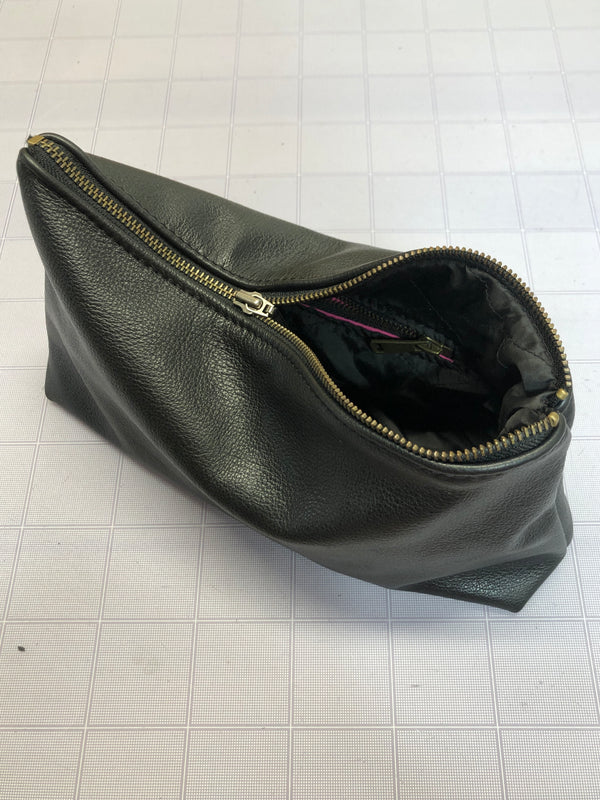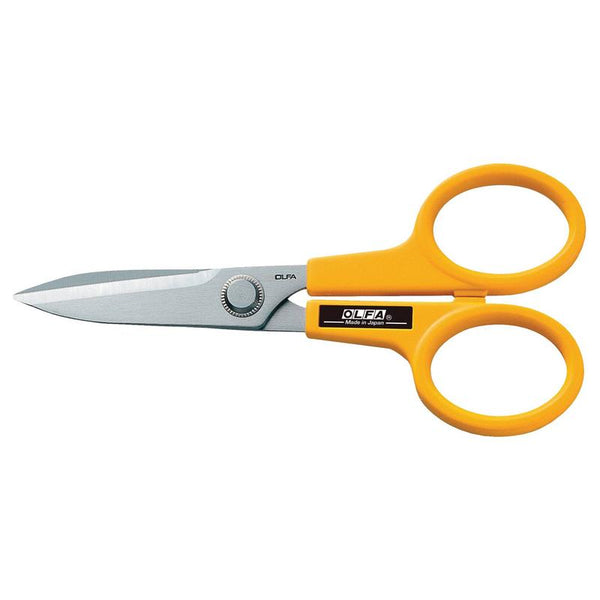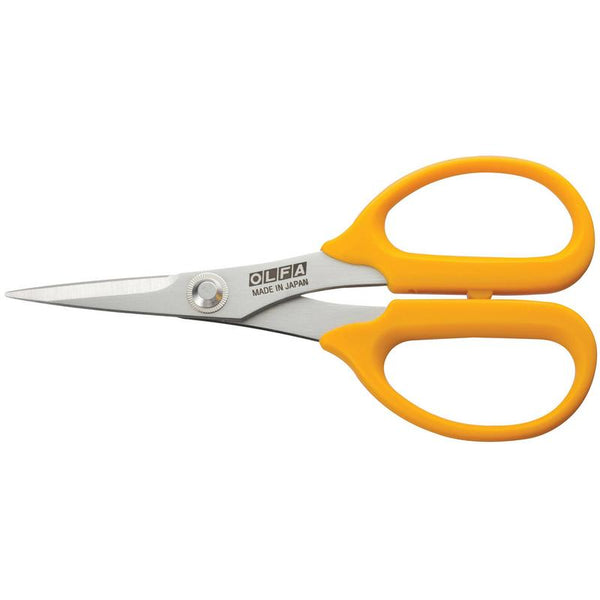
Sewing the Shell and Lining Together to Make a Bag

Designer: Randa Roberts
IG: So Comfy Designs
---------------------------------
Hi again! It’s me, Randa Roberts of So Comfy Designs back with a new post in my blog series with OLFA showing how I upcycle a leather jacket into a custom designed, crossbody bag. Finally, I’m showing you how I sew the bag! Back when I started this series, I decided that since there are countless design concepts when it comes to custom, that it was best to stay basic. Here, I’ll show you how I take all of the pieces and put them together and turn them out into a beautiful, upcycled bag.
Here are the steps that I take to sew a bag:
- Sew lining and shell to the zipper
- Sew all around the lining and the bag
- Box the corners
A little note about bag shape; I love a slouchy bag. It fits against the natural curves of a body nicely and a lot of that shape comes from boxing the bottom corners of the bag. Over the years I’ve learned some really interesting techniques to achieve a square bottom, but I’m going to show you the standard way.
The main tool I’ll be using here is my TechSew 2700 to power through the layers of leather and poly. It may be a small piece of the overall project, but thread selection is key when making a leather bag that will stand the test of time. I use bonded nylon thread in my industrial sewing machine because it is one of the strongest synthetic threads in use today. Its high tensile strength makes it idea for heavy use so it can stand up to daily wear and tear.
Besides my sewing machine and thread, I also have on hand:

Tools:
- OLFA 7-Inch SCS-2 Serrated-Edge Stainless Steel Scissors
- OLFA 5-Inch SCS-4 Precision Appliqué Scissors
- OLFA TCM-L 24" X 36" 3mm Translucent Double-Sided, Self-Healing Cutting Mat (discontinued)
- Oliso Mini Project Iron
- Ironing board
- Wonder clips and/or binder clips - I use both
- Heavy duty sewing machine (to sew leather)
- Bonded nylon thread such as a Tex 60
SEW LINING AND SHELL TO THE ZIPPER
Remember when we cut the zipper and the shell/lining? Now it’s time to put it all together. This is where wonder clips become my best friend. Quick note on zipper direction; I’m right handed, and I wear my crossbody bag on the left side. I’ve found that having my zipper open to the left is easiest and most secure.
I’ve run a quick stitch across the zipper to keep it in place. It’s hard to see because I used black thread, but it’s there and that’s the line I’ll follow when sewing the lining to it.
With right sides together, I clip the liner to the shell so the zipper is in line between the layers. A few more clips down the line and I take it to my machine. I sew with the lining side facing down, and follow the line I just sewed. Now my lining and shell are attached at the right spot.
Sewing. Then trimming.
Pressing the seam is an important step to getting a smooth stitch on a perfectly laying seam. TIP: When pressing a seam that has leather on the other side, make sure the steam function is off, the setting is on low heat. Leather can absolutely be damaged and ‘shrink up’ when it’s exposed to high heat. Trust me. Save the steam for pressing only the linings and pockets where there is no leather.
It’s all lined up and ready to sew. It’s a matter of style and preference whether or not to do this topstitching, but I did choose to have it for this design, because I am going to add something later (hint!).
Repeat to sew the other side.
SEW THE BAG TOGETHER
Matching ride sides together I clip down each side of the bag, checking to make sure the sides line up evenly. I sew both sides first and leave the bottom open so I can easily make any changes if necessary.
FINISH WITH BOXED CORNERS
For precise corners, use an OLFA Frosted Advantage ruler and mark a 1” square. Here’s where I love to use my OLFA 7” Serrated-Edge Stainless-Steel scissors, because they strong enough to cut through the layers of leather.
Line up the seams, open seams, use a binder clip to clip it in place.
Sewing through this bulk is difficult. I take my time, and sink my needle in about 1/4” from the ends so I can get a clean start and backstitch.
Measure, line up, make sure it’s symmetrical and trim. TIP: I Leave a little extra allowance for some body and durability. I follow the same steps for the lining. First, I sew the bottom together a few inches out at each corner. I leave about 4” open at the bottom so I can turn the bag out. Stitching that bottom opening closed is the very stitch I make on every bag.
Time to turn it out! Such an exciting step.
I push those corners out! I often use the top of a Sharpie to get the leverage I need. It works great.
Here it is! A basic bag with inside pockets and a zipped opening. There are a few more steps to finish this bag off; next post will show you how I create and attach strap tabs and an adjustable strap from the same upcycled leather jacket.
So be sure to come back to see some (not all! I have some really amazing design tricks to show you in my final post!) how I make this bag a useful, and beautiful crossbody. If you need to catch up on the first five posts, and see other projects made with upcycled leather using OLFA tools, click here. See you next post!
Randa































